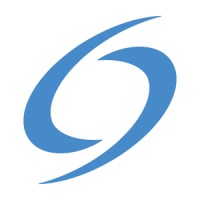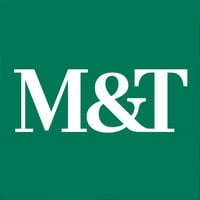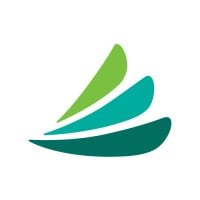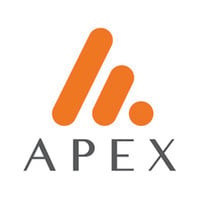
ClearBalance Healthcare Company Cyber Security Posture
clearbalance.orgTransforming Healthcare Financing, Empowering Patients. We are the trusted leader in patient financing, empowering comprehensive financial health for both our healthcare partners and their patients. We are pioneering comprehensive financial solutions and healthcare payor support systems to ensure financial well-being throughout the healthcare journey. By fostering strong partnerships, we are the go-to resource for reliable, transparent, and inclusive patient financing, transforming the way healthcare is accessed and experienced. Our approach to healthcare financing places us at the forefront of developing solutions specifically tailored to patients and healthcare systems. We are committed to making healthcare more affordable and accessible—and making the way people pay for healthcare more transparent and understandable. We are transforming the way patients manage their healthcare, while also improving the financial well-being of healthcare systems nationwide. ClearBalance works to ensure affordable healthcare repayment plans are accessible to individuals from all walks of life, irrespective of one’s background, financial constraints, or previous payment history. Our repayment plans are designed to leave patients as financially healthy as they are physically and mentally, offering best-in-class patient financing models that simplify the registration and account management process.
ClearBalance Healthcare Company Details
clearbalance
66 employees
1918.0
52
Financial Services
clearbalance.org
Scan still pending
CLE_1951474
In-progress
Between 800 and 900
This score is AI-generated and less favored by cyber insurers, who prefer the TPRM score.
 ClearBalance Healthcare Global Score
ClearBalance Healthcare Global Score.png)

ClearBalance Healthcare Company Scoring based on AI Models
| Model Name | Date | Description | Current Score Difference | Score |
|---|---|---|---|---|
| AVERAGE-Industry | 03-12-2025 | This score represents the average cybersecurity rating of companies already scanned within the same industry. It provides a benchmark to compare an individual company's security posture against its industry peers. | N/A | Between 800 and 900 |
ClearBalance Healthcare Company Cyber Security News & History
| Entity | Type | Severity | Impact | Seen | Url ID | Details | View |
|---|---|---|---|---|---|---|---|
| clearbalance | Data Leak | 85 | 4 | 07/2021 | CLE17293223 | Link | |
Rankiteo Explanation : Attack with significant impact with customers data leaksDescription: A California-based company called ClearBalance reported being the victim of a cyber assault and that over 200000 of their customers' personally identifiable information (PII) had been stolen during an email hacking incident. ClearBalance said the personal information impacted included: names, tax IDs, Social Security numbers, dates of birth, government-issued IDs, phone numbers, healthcare account numbers, balances, dates of service, ClearBalance loan numbers, personal banking information, clinical information, health insurance information, and full-face photographs. The business was updating its protocols for reporting suspicious activities, changing user account passwords, and "implementing stricter access controls in the cloud email environment. | |||||||
ClearBalance Healthcare Company Subsidiaries

Transforming Healthcare Financing, Empowering Patients. We are the trusted leader in patient financing, empowering comprehensive financial health for both our healthcare partners and their patients. We are pioneering comprehensive financial solutions and healthcare payor support systems to ensure financial well-being throughout the healthcare journey. By fostering strong partnerships, we are the go-to resource for reliable, transparent, and inclusive patient financing, transforming the way healthcare is accessed and experienced. Our approach to healthcare financing places us at the forefront of developing solutions specifically tailored to patients and healthcare systems. We are committed to making healthcare more affordable and accessible—and making the way people pay for healthcare more transparent and understandable. We are transforming the way patients manage their healthcare, while also improving the financial well-being of healthcare systems nationwide. ClearBalance works to ensure affordable healthcare repayment plans are accessible to individuals from all walks of life, irrespective of one’s background, financial constraints, or previous payment history. Our repayment plans are designed to leave patients as financially healthy as they are physically and mentally, offering best-in-class patient financing models that simplify the registration and account management process.
Access Data Using Our API

Get company history
.png)
ClearBalance Healthcare Cyber Security News
ClearBalance data breach $2.65M class action settlement
Affected consumers took legal action against CSI Financial Services in a class action lawsuit, arguing the company failed to prevent the data breach or, once ...
Angelo Gordon & Co.-Backed ClearBalance Weighs a Sale
Founder of Maillis Group alleges H.I.G. sold the company from one of its funds to another at an unfairly discounted price, handing the private- ...

ClearBalance Healthcare Similar Companies

M&T Bank
Great companies have an enduring sense of purpose. At M&T, our purpose is a simple one: make a difference in people’s lives and uplift the diverse communities we serve. Founded in 1856 in Buffalo, NY we are now a top 11 full-service US-based commercial bank with a retail footprint across the east co

Goldman Sachs
At Goldman Sachs, we believe progress is everyone’s business. That’s why we commit our people, capital and ideas to help our clients, shareholders and the communities we serve to grow. Founded in 1869, Goldman Sachs is a leading global investment banking, securities and investment management firm. H

KPMG Africa
Through helping other organizations mitigate risks and grasp opportunities, we can drive positive, sustainable change for clients, our people and society at large. KPMG member firms operate in 147 countries, collectively employing more than 219,000 people, serving the needs of business, governments

CareCredit
CareCredit, a Synchrony solution, is a leading health and wellness credit card with flexible financing options that patients or clients can use to finance the care they want and need without delaying appointments or treatment for themselves or their pets.* With over 12 million cardholder accounts

Apex Group (Luxembourg)
We are a single-source financial solutions provider dedicated to driving positive change while supporting the growth and ambitions of asset managers, allocators, financial institutions, and family offices around the world. Established in Bermuda in 2003, we have continually disrupted the industry

Sumitomo Mitsui Banking Corporation – SMBC Group
SMBC Group is a top-tier global financial group. Headquartered in Tokyo and with a 400-year history, SMBC Group offers a diverse range of financial services, including banking, leasing, securities, credit cards, and consumer finance. The Group has more than 150 offices and 86,000 employees worldwide

Frequently Asked Questions (FAQ) on Cybersecurity Incidents
ClearBalance Healthcare CyberSecurity History Information
Total Incidents: According to Rankiteo, ClearBalance Healthcare has faced 1 incidents in the past.
Incident Types: The types of cybersecurity incidents that have occurred include ['Data Leak'].
Total Financial Loss: The total financial loss from these incidents is estimated to be {total_financial_loss}.
Cybersecurity Posture: The company's overall cybersecurity posture is described as Transforming Healthcare Financing, Empowering Patients. We are the trusted leader in patient financing, empowering comprehensive financial health for both our healthcare partners and their patients. We are pioneering comprehensive financial solutions and healthcare payor support systems to ensure financial well-being throughout the healthcare journey. By fostering strong partnerships, we are the go-to resource for reliable, transparent, and inclusive patient financing, transforming the way healthcare is accessed and experienced. Our approach to healthcare financing places us at the forefront of developing solutions specifically tailored to patients and healthcare systems. We are committed to making healthcare more affordable and accessible—and making the way people pay for healthcare more transparent and understandable. We are transforming the way patients manage their healthcare, while also improving the financial well-being of healthcare systems nationwide. ClearBalance works to ensure affordable healthcare repayment plans are accessible to individuals from all walks of life, irrespective of one’s background, financial constraints, or previous payment history. Our repayment plans are designed to leave patients as financially healthy as they are physically and mentally, offering best-in-class patient financing models that simplify the registration and account management process..
Detection and Response: The company detects and responds to cybersecurity incidents through {description_of_detection_and_response_process}.
Incident Details
Incident 1: Ransomware Attack
Title: {Incident_Title}
Description: {Brief_description_of_the_incident}
Date Detected: {Detection_Date}
Date Publicly Disclosed: {Disclosure_Date}
Date Resolved: {Resolution_Date}
Type: {Type_of_Attack}
Attack Vector: {Attack_Vector}
Vulnerability Exploited: {Vulnerability}
Threat Actor: {Threat_Actor}
Motivation: {Motivation}
Incident 2: Data Breach
Title: {Incident_Title}
Description: {Brief_description_of_the_incident}
Date Detected: {Detection_Date}
Date Publicly Disclosed: {Disclosure_Date}
Date Resolved: {Resolution_Date}
Type: {Type_of_Attack}
Attack Vector: {Attack_Vector}
Vulnerability Exploited: {Vulnerability}
Threat Actor: {Threat_Actor}
Motivation: {Motivation}
Common Attack Types: As of now, the company has not encountered any reported incidents involving common cyberattacks.
Identification of Attack Vectors: The company identifies the attack vectors used in incidents through {description_of_identification_process}.
Impact of the Incidents
Incident 1: Ransomware Attack
Financial Loss: {Financial_Loss}
Data Compromised: {Data_Compromised}
Systems Affected: {Systems_Affected}
Downtime: {Downtime}
Operational Impact: {Operational_Impact}
Conversion Rate Impact: {Conversion_Rate_Impact}
Revenue Loss: {Revenue_Loss}
Customer Complaints: {Customer_Complaints}
Brand Reputation Impact: {Brand_Reputation_Impact}
Legal Liabilities: {Legal_Liabilities}
Identity Theft Risk: {Identity_Theft_Risk}
Payment Information Risk: {Payment_Information_Risk}
Incident 2: Data Breach
Financial Loss: {Financial_Loss}
Data Compromised: {Data_Compromised}
Systems Affected: {Systems_Affected}
Downtime: {Downtime}
Operational Impact: {Operational_Impact}
Conversion Rate Impact: {Conversion_Rate_Impact}
Revenue Loss: {Revenue_Loss}
Customer Complaints: {Customer_Complaints}
Brand Reputation Impact: {Brand_Reputation_Impact}
Legal Liabilities: {Legal_Liabilities}
Identity Theft Risk: {Identity_Theft_Risk}
Payment Information Risk: {Payment_Information_Risk}
Average Financial Loss: The average financial loss per incident is {average_financial_loss}.
Commonly Compromised Data Types: The types of data most commonly compromised in incidents are {list_of_commonly_compromised_data_types}.
Incident 1: Ransomware Attack
Entity Name: {Entity_Name}
Entity Type: {Entity_Type}
Industry: {Industry}
Location: {Location}
Size: {Size}
Customers Affected: {Customers_Affected}
Incident 2: Data Breach
Entity Name: {Entity_Name}
Entity Type: {Entity_Type}
Industry: {Industry}
Location: {Location}
Size: {Size}
Customers Affected: {Customers_Affected}
Response to the Incidents
Incident 1: Ransomware Attack
Incident Response Plan Activated: {Yes/No}
Third Party Assistance: {Yes/No}
Law Enforcement Notified: {Yes/No}
Containment Measures: {Containment_Measures}
Remediation Measures: {Remediation_Measures}
Recovery Measures: {Recovery_Measures}
Communication Strategy: {Communication_Strategy}
Adaptive Behavioral WAF: {Adaptive_Behavioral_WAF}
On-Demand Scrubbing Services: {On_Demand_Scrubbing_Services}
Network Segmentation: {Network_Segmentation}
Enhanced Monitoring: {Enhanced_Monitoring}
Incident 2: Data Breach
Incident Response Plan Activated: {Yes/No}
Third Party Assistance: {Yes/No}
Law Enforcement Notified: {Yes/No}
Containment Measures: {Containment_Measures}
Remediation Measures: {Remediation_Measures}
Recovery Measures: {Recovery_Measures}
Communication Strategy: {Communication_Strategy}
Adaptive Behavioral WAF: {Adaptive_Behavioral_WAF}
On-Demand Scrubbing Services: {On_Demand_Scrubbing_Services}
Network Segmentation: {Network_Segmentation}
Enhanced Monitoring: {Enhanced_Monitoring}
Incident Response Plan: The company's incident response plan is described as {description_of_incident_response_plan}.
Third-Party Assistance: The company involves third-party assistance in incident response through {description_of_third_party_involvement}.
Data Breach Information
Incident 2: Data Breach
Type of Data Compromised: {Type_of_Data}
Number of Records Exposed: {Number_of_Records}
Sensitivity of Data: {Sensitivity_of_Data}
Data Exfiltration: {Yes/No}
Data Encryption: {Yes/No}
File Types Exposed: {File_Types}
Personally Identifiable Information: {Yes/No}
Prevention of Data Exfiltration: The company takes the following measures to prevent data exfiltration: {description_of_prevention_measures}.
Handling of PII Incidents: The company handles incidents involving personally identifiable information (PII) through {description_of_handling_process}.
Ransomware Information
Incident 1: Ransomware Attack
Ransom Demanded: {Ransom_Amount}
Ransom Paid: {Ransom_Paid}
Ransomware Strain: {Ransomware_Strain}
Data Encryption: {Yes/No}
Data Exfiltration: {Yes/No}
Ransom Payment Policy: The company's policy on paying ransoms in ransomware incidents is described as {description_of_ransom_payment_policy}.
Data Recovery from Ransomware: The company recovers data encrypted by ransomware through {description_of_data_recovery_process}.
Regulatory Compliance
Incident 1: Ransomware Attack
Regulations Violated: {Regulations_Violated}
Fines Imposed: {Fines_Imposed}
Legal Actions: {Legal_Actions}
Regulatory Notifications: {Regulatory_Notifications}
Incident 2: Data Breach
Regulations Violated: {Regulations_Violated}
Fines Imposed: {Fines_Imposed}
Legal Actions: {Legal_Actions}
Regulatory Notifications: {Regulatory_Notifications}
Regulatory Frameworks: The company complies with the following regulatory frameworks regarding cybersecurity: {list_of_regulatory_frameworks}.
Ensuring Regulatory Compliance: The company ensures compliance with regulatory requirements through {description_of_compliance_measures}.
Lessons Learned and Recommendations
Incident 1: Ransomware Attack
Lessons Learned: {Lessons_Learned}
Incident 2: Data Breach
Lessons Learned: {Lessons_Learned}
Incident 1: Ransomware Attack
Recommendations: {Recommendations}
Incident 2: Data Breach
Recommendations: {Recommendations}
Key Lessons Learned: The key lessons learned from past incidents are {list_of_key_lessons_learned}.
Implemented Recommendations: The company has implemented the following recommendations to improve cybersecurity: {list_of_implemented_recommendations}.
References
Additional Resources: Stakeholders can find additional resources on cybersecurity best practices at {list_of_additional_resources}.
Investigation Status
Incident 1: Ransomware Attack
Investigation Status: {Investigation_Status}
Incident 2: Data Breach
Investigation Status: {Investigation_Status}
Communication of Investigation Status: The company communicates the status of incident investigations to stakeholders through {description_of_communication_process}.
Stakeholder and Customer Advisories
Incident 1: Ransomware Attack
Stakeholder Advisories: {Stakeholder_Advisories}
Customer Advisories: {Customer_Advisories}
Incident 2: Data Breach
Stakeholder Advisories: {Stakeholder_Advisories}
Customer Advisories: {Customer_Advisories}
Advisories Provided: The company provides the following advisories to stakeholders and customers following an incident: {description_of_advisories_provided}.
Initial Access Broker
Incident 1: Ransomware Attack
Entry Point: {Entry_Point}
Reconnaissance Period: {Reconnaissance_Period}
Backdoors Established: {Backdoors_Established}
High Value Targets: {High_Value_Targets}
Data Sold on Dark Web: {Yes/No}
Incident 2: Data Breach
Entry Point: {Entry_Point}
Reconnaissance Period: {Reconnaissance_Period}
Backdoors Established: {Backdoors_Established}
High Value Targets: {High_Value_Targets}
Data Sold on Dark Web: {Yes/No}
Monitoring and Mitigation of Initial Access Brokers: The company monitors and mitigates the activities of initial access brokers through {description_of_monitoring_and_mitigation_measures}.
Post-Incident Analysis
Incident 1: Ransomware Attack
Root Causes: {Root_Causes}
Corrective Actions: {Corrective_Actions}
Incident 2: Data Breach
Root Causes: {Root_Causes}
Corrective Actions: {Corrective_Actions}
Post-Incident Analysis Process: The company's process for conducting post-incident analysis is described as {description_of_post_incident_analysis_process}.
Corrective Actions Taken: The company has taken the following corrective actions based on post-incident analysis: {list_of_corrective_actions_taken}.
Additional Questions
General Information
Ransom Payment History: The company has {paid/not_paid} ransoms in the past.
Last Ransom Demanded: The amount of the last ransom demanded was {last_ransom_amount}.
Last Attacking Group: The attacking group in the last incident was {last_attacking_group}.
Incident Details
Most Recent Incident Detected: The most recent incident detected was on {most_recent_incident_detected_date}.
Most Recent Incident Publicly Disclosed: The most recent incident publicly disclosed was on {most_recent_incident_publicly_disclosed_date}.
Most Recent Incident Resolved: The most recent incident resolved was on {most_recent_incident_resolved_date}.
Impact of the Incidents
Highest Financial Loss: The highest financial loss from an incident was {highest_financial_loss}.
Most Significant Data Compromised: The most significant data compromised in an incident was {most_significant_data_compromised}.
Most Significant System Affected: The most significant system affected in an incident was {most_significant_system_affected}.
Response to the Incidents
Third-Party Assistance in Most Recent Incident: The third-party assistance involved in the most recent incident was {third_party_assistance_in_most_recent_incident}.
Containment Measures in Most Recent Incident: The containment measures taken in the most recent incident were {containment_measures_in_most_recent_incident}.
Data Breach Information
Most Sensitive Data Compromised: The most sensitive data compromised in a breach was {most_sensitive_data_compromised}.
Number of Records Exposed: The number of records exposed in the most significant breach was {number_of_records_exposed}.
Ransomware Information
Highest Ransom Demanded: The highest ransom demanded in a ransomware incident was {highest_ransom_demanded}.
Highest Ransom Paid: The highest ransom paid in a ransomware incident was {highest_ransom_paid}.
Regulatory Compliance
Highest Fine Imposed: The highest fine imposed for a regulatory violation was {highest_fine_imposed}.
Most Significant Legal Action: The most significant legal action taken for a regulatory violation was {most_significant_legal_action}.
Lessons Learned and Recommendations
Most Significant Lesson Learned: The most significant lesson learned from past incidents was {most_significant_lesson_learned}.
Most Significant Recommendation Implemented: The most significant recommendation implemented to improve cybersecurity was {most_significant_recommendation_implemented}.
References
Most Recent Source: The most recent source of information about an incident is {most_recent_source}.
Most Recent URL for Additional Resources: The most recent URL for additional resources on cybersecurity best practices is {most_recent_url}.
Investigation Status
Current Status of Most Recent Investigation: The current status of the most recent investigation is {current_status_of_most_recent_investigation}.
Stakeholder and Customer Advisories
Most Recent Stakeholder Advisory: The most recent stakeholder advisory issued was {most_recent_stakeholder_advisory}.
Most Recent Customer Advisory: The most recent customer advisory issued was {most_recent_customer_advisory}.
Initial Access Broker
Most Recent Entry Point: The most recent entry point used by an initial access broker was {most_recent_entry_point}.
Most Recent Reconnaissance Period: The most recent reconnaissance period for an incident was {most_recent_reconnaissance_period}.
Post-Incident Analysis
Most Significant Root Cause: The most significant root cause identified in post-incident analysis was {most_significant_root_cause}.
Most Significant Corrective Action: The most significant corrective action taken based on post-incident analysis was {most_significant_corrective_action}.
What Do We Measure?
















Every week, Rankiteo analyzes billions of signals to give organizations a sharper, faster view of emerging risks. With deeper, more actionable intelligence at their fingertips, security teams can outpace threat actors, respond instantly to Zero-Day attacks, and dramatically shrink their risk exposure window.
These are some of the factors we use to calculate the overall score:
Identify exposed access points, detect misconfigured SSL certificates, and uncover vulnerabilities across the network infrastructure.
Gain visibility into the software components used within an organization to detect vulnerabilities, manage risk, and ensure supply chain security.
Monitor and manage all IT assets and their configurations to ensure accurate, real-time visibility across the company's technology environment.
Leverage real-time insights on active threats, malware campaigns, and emerging vulnerabilities to proactively defend against evolving cyberattacks.




